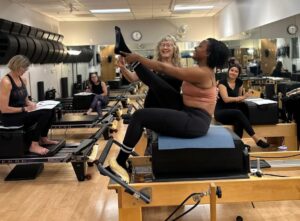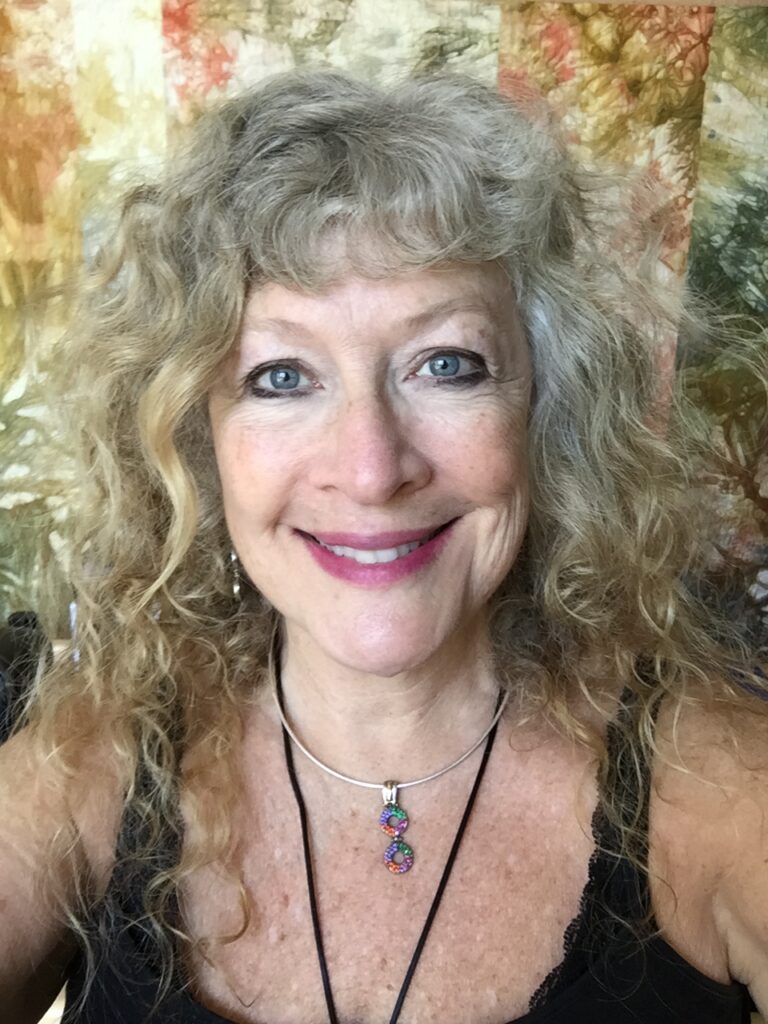Issue #409 – Wednesday, September 13, 2023
Common Myths About Working with Hypermobility
Part I
by Gwen Miller
Hypermobility is often used as a descriptive term for someone who has greater than “normal” range of motion in some or all of the joints of their body. Someone who is hypermobile does not necessarily have pain or instability. Hypermobility Syndrome and Joint Hypermobility Syndrome are diagnoses that are now referred to as Hypermobility Spectrum Disorder (HSD).
Ehlers-Danlos Syndrome is an inherited connective tissue disorder that also has a hypermobile subtype (hEDS).
The first time I worked with someone who had a hypermobile body, I was awestruck. The ranges of movement I witnessed in my client seemed magnificently beautiful and fluid … and unattainable for me. I often joke that if you ever see me do the splits, don’t hesitate, just call the medics because something is definitely wrong. My innate being had no frame of reference for the ranges of movement I witnessed.
In the “corrective exercise” and personal training world that I came from, the ranges of movement available in a person with a hypermobile body were almost things to be feared. I, like many other colleagues, fell into the trap of accepting what we were taught about working with people who had larger than “normal” ranges of movement.
Some of the beliefs I was taught, that are still in circulation, include:
- Hyperextension is bad
- Stay away from end ranges of movement
- Don’t stretch
- Keep the weights/springs/resistance light
Let’s look at these old ways of thinking with new eyes, shall we?
Hyperextension is bad
What is hyperextension? One definition is that the angle between the bones is greater than normal. What is normal?
Gwen is the author of Safe Movement for All Spines – A Guide to Spinal Anatomy and How to Work with 21 Spine and Hip Conditions, published by North Atlantic Books and distributed by Penguin, available from multiple booksellers.
As a Principal Educator for Balanced Body® Pilates Education, she enjoys mentoring teachers and developing community amongst movement professionals.
Gwen’s Pilates journey began after she was diagnosed with degenerative disc disease and degenerative joint disease. She had the amazingly good fortune to have contemporary Pilates legend Elizabeth Larkam as her primary teacher and mentor during her time at Balanced Body University.
She remembers, “during my training, it was me and two PTs in the Balanced Body modules at the San Francisco Bay Club. They were on a fast track, and I had not planned to be, but the moment I realized the opportunity I had, to learn how to teach Pilates from Elizabeth, I jumped on the train and never looked back. It was one of the best decisions I have ever made. Elizabeth was very much into post-rehabilitation, and her influence has stayed with me through the years. She was so gracious, when I had passed my Comprehensive exams and started teaching, she mentored me, talking me through how to teach a class, how to walk through and cue, and what to do to best be prepared and not to be nervous. I find great joy in providing the same excellent care and help to my students, honoring the mentoring she provided me by passing it along.”
As a Hendrickson Method® Manual Therapist Gwen combines orthopedic manual therapy with movement to help her clientele achieve and maintain their quality of life. She has coined the term “Integrated Therapy” to describe her blend of modalities.
Her advanced certifications qualify her to work with spinal pathologies, with an emphasis in working with scoliosis. She is a Corrective Holistic Exercise Kinesiologist (CHEK Practitioner 3), Master Scolio-Pilates® Teacher, and is Yoga for Scoliosis® Trainer certified.
Gwen’s current project, The Dynamic Spine: Safe Movement for All Spines (and Hips), is a continuing education curriculum and mentorship based on her book that synthesizes over two decades’ training and experience in working with special populations to educate and empower the next generation of teachers.



